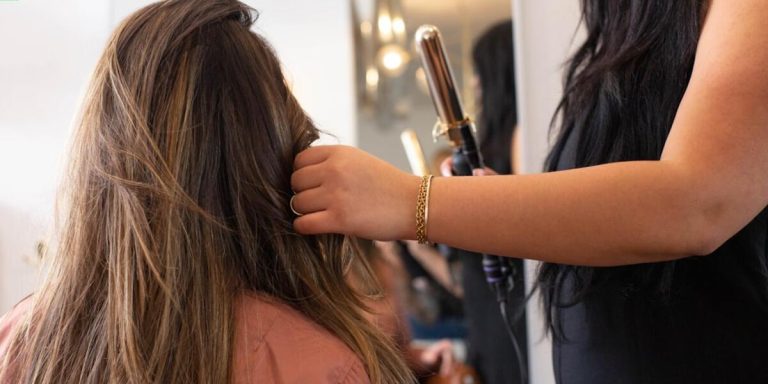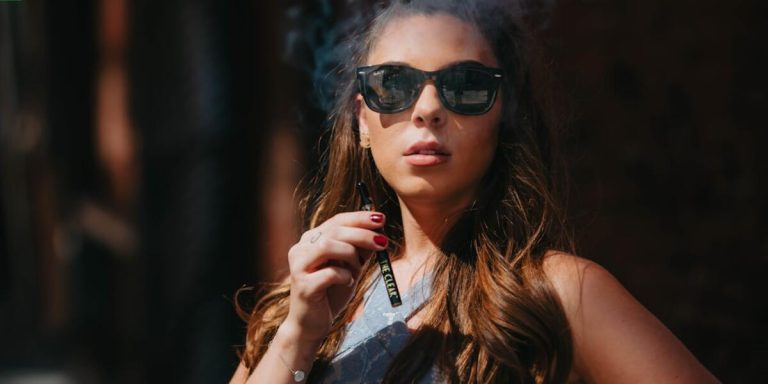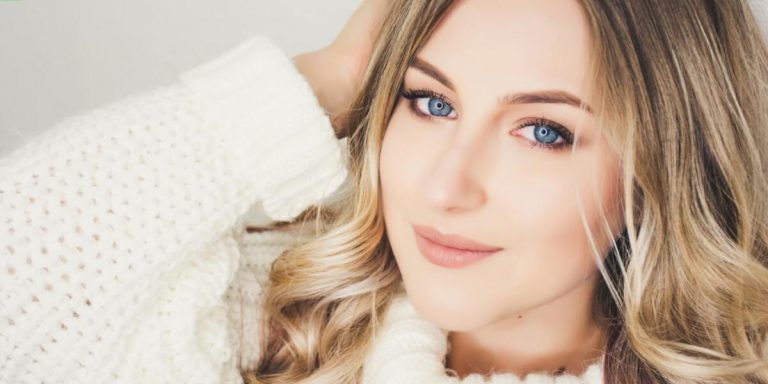Hair Care for Relaxed Hair: Essential Routines and Products to Preserve its Health
Relaxed hair, known for its smooth texture and straight appearance, requires a specific regimen to stay healthy. Ensuring the perfect “hair care for relaxed hair” involves maintaining proper moisture levels and using suitable products that prevent damage while supporting growth.
This post explores the essentials of caring for chemically treated strands. We cover routine practices to preserve your mane’s health and help you identify top-tier products tailored specifically to this hair type. So, let’s dive right in!
Did you know?
The natural oils produced by your scalp, also known as sebum, cannot travel down the hair shaft in curly or coily types causing dryness. However, with relaxed hair being straighter, these oils can distribute more evenly along the strands promoting better hydration.
Understanding Relaxed Hair: The Basics of Proper Care
Relaxed hair, a popular choice for many, needs special attention to remain healthy and shiny. Chemicals used in this treatment alter your natural strands’ structure, making them straighter and more manageable. However, relaxed hair becomes more prone to damage without proper care.
First, you must understand that relaxed locks require a specialized maintenance plan due to their fragile nature from chemical treatments. Hydration is critical because these chemicals can lead to dryness and potentially cause breakage, escalating into permanent hair damage over time.
In 2023, manufacturers have released new products for chemically treated hair care. These products feature:
- Hydrating shampoos fortified with vitamins and oils to nourish hair from the root and improve moisture retention
- Conditioning masks packed with protein compounds to restore strength and enhance elasticity, reducing shedding during styling or daily activities
But beyond product choices lies another significant aspect: adopting appropriate habits related home routines such us avoiding unnecessary heat application which only adds stress already weakened fibers due frequent chemical exposure etc.
Identifying the Unique Needs of Chemically Treated Strands
Chemically treated strands, such as relaxed hair, have unique needs compared to natural tresses. Identifying these needs is a crucial first step in achieving and maintaining healthy-looking and vibrant locks—a must-know for everyone who is opting for chemically processed hairstyles.
Relaxed hair undergoes chemical treatments to break down its protein structure and become straighter. This alteration makes it more susceptible to dryness and damage. Understanding how to meet its specific needs empowers you with proper hair care for relaxed hair.
Firstly, it’s essential to keep hydrated from within by drinking plenty of water—an often overlooked yet highly necessary habit not just for overall health but especially beneficial in enhancing moisture content of your mane which aids significantly in preventing brittleness and breakage.
Consistently schedule deep conditioning treatment sessions—preferably once every week or two, depending on your individual requirements. Deep conditioners pack concentrated moisturizing agents designed to restore lost nutrients into your thirsty strands and provide sustainable hydration even after multiple washes.
Incorporate deep cleansing into your daily routines to go beyond surface-level cleanliness. For example, use a clarifying shampoo that:
- Removes product buildup
- Retains the natural oils of the scalp for balance
Such a regimen improves subsequent product penetration, enhancing ingredient effectiveness. As a result, you’ll experience improved manageability and promote stronger, faster hair growth—leading to the luscious appearance we all strive for!
Establishing a Gentle Cleansing Routine
Establishing a gentle cleansing routine is fundamental for hair care for relaxed hair. This process demands careful selection of products and consistent application to ensure that your strands remain healthy and vibrant.
Start by choosing sulfate-free shampoos. Sulfates, while effective in cleaning the scalp, can be exceedingly harsh on chemically-treated or relaxed hair. Shampoos containing sulfates may strip away natural oils leading to dryness and potential damage.
Use co-washes, short for “conditioner-only washing,” in your routine. Co-washing cleanses your scalp while preserving its essential oils, unlike traditional shampoo. It’s perfect for refreshing your hair between regular wash days without over-cleansing.
Improvisation also plays a crucial role here. For instance, infusing warm water with apple cider vinegar provides a mild yet efficient alternative cleanse that helps maintain pH balance whilst adding shine back into dull locks.
Detangle your relaxed hair after cleansing and before drying. Use wide-toothed combs or detangling brushes, and gently glide from the ends towards the roots to minimize mechanical stress on sensitive links within each strand’s structure. This gentle method considerably reduces breakage compared to rough handling.
Crafting a Nutrition Plan for Stronger, Healthier Relaxed Hair
Maintain a lustrous, healthy mane after relaxing your hair by doing more than just using the right shampoos and conditioners. Remember that your diet plays a crucial role in enhancing the health of relaxed hair. Don’t overlook what you eat when considering “hair care for relaxed hair.” Embrace proper nutrition if you’re looking for stronger, healthier locks.
- Foods high in vitamins A and E
- Foods rich in zinc
- Biotin (vitamin B7) sources
- Omega-3 fatty acid-rich foods
Strawberries are packed with vitamin C to enhance collagen production and promote growth. Avocados offer vitamin E for improved scalp circulation and vitamin B to combat hair loss.
Eggs are a powerful source of protein, essential for maintenance, and provide significant biotin levels.
Fatty fish like salmon or mackerel contain significant omega-3 fatty acids, which help enhance hair shine and density. Lean poultry is also a great source of essential proteins that deliver oxygen necessary to keep strands strong and protect against breakage from relaxation processes.
Importance of Hydration and Moisture Retention Strategies
Hydration is the cornerstone of hair care for relaxed hair. Lack of moisture can lead to dryness, which consequently leads to breakage and a myriad of other problems like frizziness and dandruff.
Proper hydration starts from within; it’s not just about slathering your hair with all sorts of moisturizing products. Drinking at least eight glasses or two liters of water each day will hydrally nourish your body as well as provide necessary internal hydration for healthier strands.
Alongside keeping yourself hydrated, consider incorporating protein-rich foods into your diet such as eggs, lean meat, fish – these are known elements that aid in strengthening the keratin structure in our mane – making them less prone to damage.
To retain stronger and healthier relaxed hair, actively manage external sources of moisture to effectively lock in this essential component.
1. Pre-poo treatment: Start by applying oil-based formulations before washing off using shampoo or conditioner.
2. Deep conditioning: Choose conditioners fortified with ingredients like natural oils (Argan oil or jojoba) and shea butter that deeply penetrate roots providing maximum nutrition.
3.L.O.C method (Liquid cream-oil): This strategy involves first wetting clean tresses followed by application creams then sealing cuticles using any light natural oil further promoting absorption while preventing evaporation.
Selecting Nutrient-Rich Products to Fortify Weak Points
When planning a hair care regimen for relaxed hair, selecting nutrient-rich products is paramount. They don’t just keep your locks looking aesthetically pleasing but also ensure strength and overall health. Here are some tips to help you choose the right fortifying products.
Firstly, focus on natural ingredients when choosing hair care for relaxed hair. Products rich in vitamins A, B-vitamins like biotin (B7), C and E can substantially boost your hairs’ vitality. These nutrients promote healthier follicles by strengthening weak points along each strand of hair.
Secondly, look out for oils such as coconut oil or argan oil in the ingredient lists. Both these fats have nourishing properties that hydrate dry scalp and strands while preventing breakage — a common issue with relaxed tresses.
Thirdly, incorporate proteins into your routine with protein-enriched conditioners or intensive treatments to combat excessive shedding post-relaxing treatment. These products rebuild lost keratin from harsh chemical processes and provide necessary reinforcement.
Remember: what goes onto our scalps ultimately ends up inside our bodies via absorption.Choose safe,nutrient-packed formulas whenever possible!
Protect and Preserve: Long-Term Maintenance Techniques for Relaxed Hair
Healthy, relaxed hair shines with sheen and luster when you carefully nurture it. Straightening can make hair more manageable, but preventing damage requires effort. By diligently using the right products and techniques for maintenance, you can achieve your hair goals.
Adopt effective long-term care strategies to preserve the vitality of your locks, ensuring they remain soft, visibly radiant, and tangle-free—everything you could wish for in flawlessly relaxed hair. First, let’s talk about moisturizing. Hydrated strands are essential for managing chemically treated tresses. Regular moisturization prevents breakage by strengthening individual fibers from within. Nourishing oils then seal this moisture, effectively prolonging hydration levels.
Using heat tools might offer quick fixes, but they can dehydrate your hair with constant exposure, making it brittle. This could cause irreversible damage if you don’t address it promptly. Limit their use or avoid them when you can to significantly improve your hair’s health. Doing so will preserve your hair’s natural shine and simplify the detangling process, reducing the physical stress from excessive brushing or combing.
Embracing Low-Manipulation Styling to Prevent Breakage
In the journey of hair care for relaxed hair, low-manipulation styling is a cornerstone. It’s about gently treating your mane to preserve its health and longevity.
The beauty industry has introduced countless products promising stronger strands but maintaining healthy locks goes much deeper than fancy treatments or expensive serums; it begins with understanding how we handle our hair every day.
Adopt protective hairstyles to significantly reduce mechanical damage from combing and brushing and promote length retention. Braids and twists, which look fabulous, safeguard delicate ends from harsh environmental factors like wind or humidity.
Limit heat application to preserve moisture and prevent your hair from becoming brittle and breaking. When you must use heat, follow these steps:
- Opt for lower temperatures.
- Apply a quality heat protectant spray to create a barrier against damage from blow dryers or flat irons.
Regular Trimming Schedules to Promote Growth
Regular trimming is an integral part of hair care for relaxed hair. A consistent schedule helps preserve the health, vitality and longevity of your locks.
Let’s delve into why this practice is so beneficial:
1. **Encourages Growth**: Trimming gets rid of damaged ends that can cause snags and tangles, thus promoting healthier growth patterns.
2. **Prevents Split Ends**: Regular trims help prevent split ends from traveling up the shaft, causing more damage to healthy strands above it.
3. **Maintains Shape and Style**: When you trim consistently, your hair maintains a balanced shape with improved manageability – making styling much easier!
Now that we understand its importance let’s talk about creating an effective trimming routine:
Every person’s head will have different requirements based on how quickly their hair grows or becomes damaged – some might need monthly trims while others every 6-8 weeks.
Conclusion
In conclusion, maintaining the health of relaxed hair requires no magic potion. A dedicated routine and appropriate products make it manageable and yield rewarding results over time. Trust your instinct—if something feels too harsh on your strands, it probably is! Keep experimenting to find what works best.
Browse our website for more insightful “Hair Care and Maintenance” content. Discover reliable tips from real-life experiences and expert advice. Click to start your journey toward admirable locks—let us guide you every step of the way through all things hair-related!







